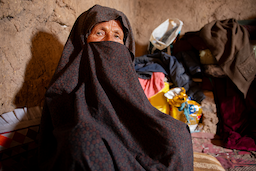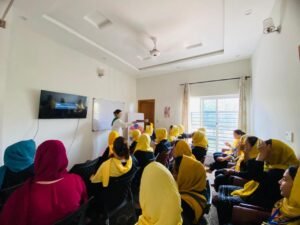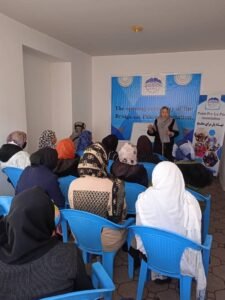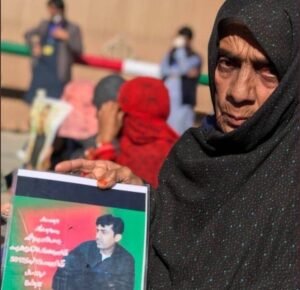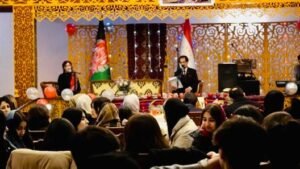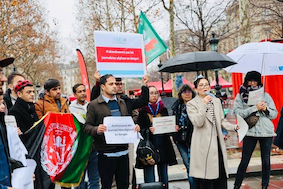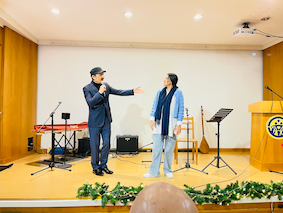Normalization of Violence Against Women and Child Marriage Culture in Afghanistan Under the Taliban Regime

Photo for ADN from Afghanistan: @Shekiba
By Nazila Jamshidi
On January 15, as reported by the Washington Post, their researchers identified 118 girls who were sold as child brides, and 116 families with girls awaiting buyers in a village in Herat. This situation persists almost three months after a powerful earthquake hit Herat, with women and girls being the most affected. The majority of casualties from the earthquakes were women and children. Despite this, many women still face challenges in accessing humanitarian aid, safe shelter, food, and medicine. Moreover, women are at a higher risk of prolonged recovery due to Taliban edicts limiting their mobility and rights. Restrictions on female humanitarian workers further exacerbate the difficulties faced by women in the aftermath of the earthquake.
According to the Washington Post, the situation in Shahrak-e-Sabz, where the selling of girls into marriage is documented, is extremely challenging. The village experiences harsh weather conditions with no access to running water, electricity, heating, or employment, and it receives minimal assistance from external sources. Living conditions are dire, with residents surviving on inadequate provisions like stale bread and black tea, and many are on the brink of starvation. These harsh circumstances are forcing families to resort to selling their daughters as a desperate measure for survival.
Previously, additional reports, including one from Amnesty International titled “Death in Slow Motion: Women and Girls Under Taliban Rule,” have highlighted an evident increase in the prevalence of child, early, and forced marriages in Afghanistan. The findings suggest that these rates overflowed under Taliban rule, coinciding with the systematic dismantling of women’s rights and economic autonomy by militant group throughout the country.
The increase in child marriage, or the practice of selling children for marriage, can be attributed to the restrictions imposed on women by the Taliban. This includes the prohibition of their continued education after the age of 12, coupled with the economic crisis in Afghanistan. Although child marriage has a historical presence in Afghanistan, there was a noticeable decrease during the 20 years of the democratic era. While it’s challenging to provide precise figures, a concerning revelation comes from a local organization, Bishnaw-Wawra, which interviewed over 3,000 young women in August last year. Approximately 70% of them reported knowing girls who were compelled to marry before turning 18. This alarming statistic signals another dark period for women and girls in the country.
Societal Toll of Child Marriage
The societal impact of child marriage in Afghanistan is evident and notably increases the risk of domestic abuse. Numerous studies, as highlighted in a recent Washington Post article, establish a strong connection between child marriage and domestic violence. In their husband’s home, young girls often bear the burden of housework and face verbal, physical, and sexual abuse, essentially experiencing a form of slavery disguised as marriage. This harsh reality contributes to the rising rates of suicide and depression among Afghan teenage girls.
Additionally, child marriage significantly contributes to high rates of maternal and child mortality, leaving children without mothers.
Beyond the profound negative effects on the lives of girls and society at large, an increasing prevalence of child marriage further promotes and normalizes this brutal tradition. The Taliban’s issuance of more than 130 discriminatory decrees in the last two years reflects a normalization and institutionalization of gender-based violence in the country. Child marriage becomes a potent tool for perpetuating elements of violence against women.
The alarming number of child marriages in Afghanistan underscores the importance of understanding its causes and effects for society to resist it effectively. Meanwhile, international organizations, including the UN, should actively pursue practical solutions to end child marriage and fight against the culture of violence against women in Afghanistan. This situation also sheds light on the ongoing struggles faced by women and girls in Afghanistan, who are trapped in a dire humanitarian crisis. It emphasizes the urgent need for support and resources to address the humanitarian needs of the people as a step in temporarily halting the practice of selling girls for survival.
Nazila Jamshidi – a gender equality and human rights specialist involved in Afghanistan’s development and democracy processes for the past decade – has worked for the UN, USAID, the International Federation of Red Cross.
Note: The contents of the article are of sole responsibility of the author. Afghan Diaspora Network will not be responsible for any inaccurate or incorrect statement in the articles.

